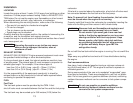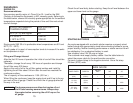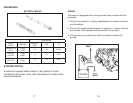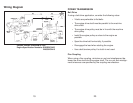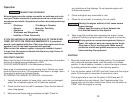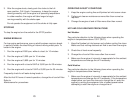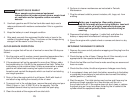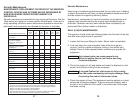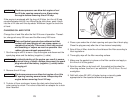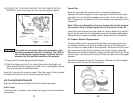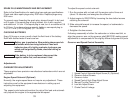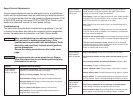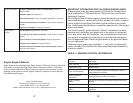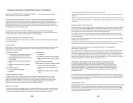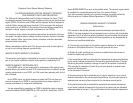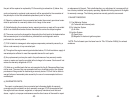
Crankcase pressure can blow hot engine oil out
the fi ll tube causing severe burns. Always stop
the engine before removing the oil fi ll cap.
If the engine is equipped with the long oil fi ll tube, turn the oil fi ll cap
counterclockwise and lift it up. Wipe the dip stick clean, push it back
into the oil fi ll tube until the cap seats. Withdraw it again to check the
oil level.
CHANGING OIL AND FILTER
Change the oil and fi lter after the fi rst 20 hours of operation. Thereaf-
ter, change oil every 50 hours and the fi lter every 200 hours.
State and federal agencies have determined that
contact with used engine oil can cause cancer or
reproductive toxicity. Take care to limit skin contact
and breathing of vapors as much as possible. Use
rubber gloves and wash exposed skin.
29
30
! WARNING
! WARNING
1 Run the engine until it is warm. Stop the engine and disconnect the
spark plug wires and the battery (negative (-) cable).
Accidental starting of the engine can result in severe
personal injury or death. Always disconnect the spark
plug wires and the battery (negative (-) cable) before
changing oil.
2 Remove the oil fi ll cap.
Crankcase pressure can blow hot engine oil out the
fi ll opening causing severe burns. Always stop the
engine before removing the oil fi ll cap.
3 To drain oil from crankcase, loosen the drain valve then twist the
outer casing to unlock. The valve is fi tted with an adapter for a drain
tube if desired.
! WARNING
! WARNING
4 Place a pan under the oil drain opening and open the oil drain plug.
Close the plug securely after the oil has drained completely.
5 Spin off the oil fi lter, drain the oil and discard the fi lter according to
local regulations.
6 Thoroughly wipe off the fi lter mounting surface.
7 Make sure the gasket is in place on the fi lter canister and apply a
thin fi lm of oil to the gasket.
8 Spin the new fi lter on by hand until the gasket just touches the
mounting surface, then turn it an additional 1/2 to 3/4 turn. Do not
overtighten.
9 Refi ll with class SE (API) of higher having a viscosity grade
appropriate for the expected ambient temperature.



